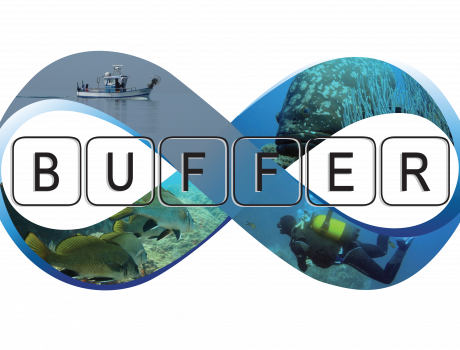Coastal zones are complex social-ecological systems playing a crucial role in the economic, social and political development of many countries. However, they are amongst the areas of the world experiencing the highest rates of pressures. Recently, some studies showed the potential of multiple-use (or partially protected) areas (PPAs) to sustain higher rates of uses and economic revenues than surrounding areas, and buffer against human-induced pressures.
Within BUFFER, the main objective is the identification of drivers of resilience in PPAs that are keys to sustain, adapt or transform derived goods and services necessary for human welfare in a context of multiple pressures. Some of the key questions BUFFER will address to reach this main objective are:
- Do PPAs help to buffer against human-induced functional changes in coastal assemblages?
- Do PPAs help to buffer against human-induced selection pressures and in protecting phenotypic diversity (in relation to adaptations to future environmental change)?
- Are uses and users (in relation to commercial and recreational fisheries, physical exploitation and scuba-diving, boating, anchoring and snorkeling) less vulnerable in PPAs? Do PPAs provide new opportunities for users?
- Can global threats on linked coastal social-ecological systems be more easily managed in PPAs?
- What are the context-dependent drivers of PPA resilience?
Disciplines involved cover ecology, fisheries science, conservation biology, economy, social science, and governance. The selected case studies include marine and freshwater partially protected areas in Europe, spanning across different ecological systems and a diverse array of socio-cultural contexts in order to increase the robustness, generalization, applicability, and transferability to decisionmakers of our results. In particular, the research teams will work on marine coasts, fjords and rivers, in France, Norway, Portugal and Sweden. The main activities will be the creation of a PPA typology and the monitoring and assessment of target variables in PPAs compared to open and fully protected areas. Those target variables include functional diversity and redundancy, selection pressures and phenotypic diversity, use opportunities and evolution, and management adaptability and transformability. The communication plan includes the involvement of practitioners and stakeholders through dedicated workshops (including both presentations by scientists and stakeholders), publication of scientific papers and communications in dedicated conferences to reach the scientific community, and transfer to policy- and decision-makers through the edition of a booklet.


